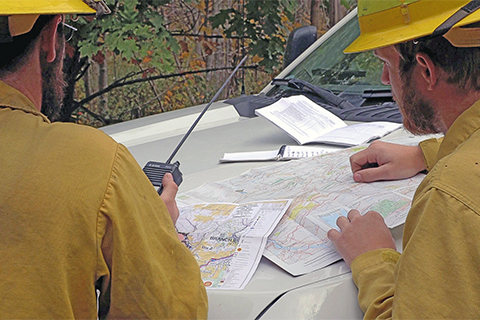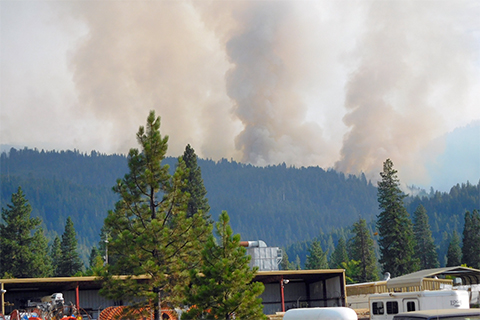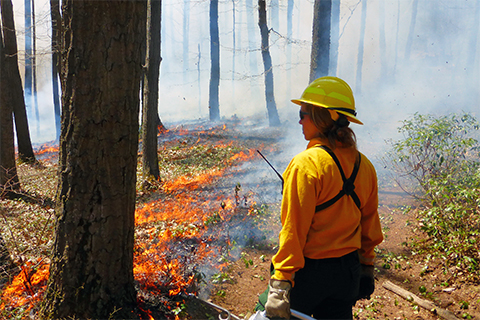Incident Management Team "Blue" pose for a photo in Idaho
Although DCNR has assisted annually with suppression crews to help combat wildland fires in the western part of the country, for the first time the Bureau of Forestry provided an Incident Management Team to manage a wildfire in another state.
The Incident Management Team was assigned to the Snake River and Cougar Rock wildfire complexes in Idaho and returned safely to the commonwealth on Aug. 21.
Thirteen current and two retired DCNR Bureau of Forestry staff comprised the 15 personnel from Pennsylvania that helped to manage successful wildfire suppression efforts over a three-week period beginning in late July and early August. There were about 140 and 450 total personnel on the Snake River and Cougar Rock wildfire complexes, respectively.
Incident Management Team Structure

In the United States, there are predominantly three types of Incident Management Teams (IMTs).
An incident such as a wildland fire is initially managed by local fire departments or fire agencies, but if the fire becomes complex additional resources are called in to address the emergency, and higher levels of management training and capability are required.
IMTs are "typed" according to the size, scope, and complexity of incidents they are capable of managing and are part of an incident command system.
To manage the logistical, fiscal, planning, operational, safety, and community issues related to the incident/emergency, an Incident Management Team provides the command and management infrastructure that is required.
Team members have expertise in finance, logistics, operations, information, safety, and planning.
A Significant First for DCNR

This IMT assignment represented a significant achievement for the agency.
When teams were originally formed in 2005, very few personnel who volunteered to serve were National Wildfire Coordinating Group (NWCG)-qualified (a requirement for deployment) in the positions for which they volunteered.
Team members and DCNR have spent the last 16 years training, gaining experience, and completing task books in order to put an NWCG-qualified team into the field.
“DCNR is proud to have demonstrated the necessary competence for Idahoan officials to trust the department with management of incidents within their borders,” said State Forester Ellen Shultzabarger. “We’d like to acknowledge the work of retired Forest Fire Protection staff who took the fledgling steps to develop our IMTs."
“Without their efforts, foresight, and persistence in the late 1990s and early 2000s, these teams would not have been in this position today,” Shultzabarger said.
More Incidents Ahead

This year, DCNR has sent six 20-person crews to western fires, plus additional smaller resources and equipment.
With major wildfires making annual headlines, it is almost certain the services of the DCNR Bureau of Forestry’s IMT will be needed again.
Team members stand poised to deliver critical wildfire management services, furthering the cause of wildfire protection at a national level.
Find more information about wildfire on the DCNR website.